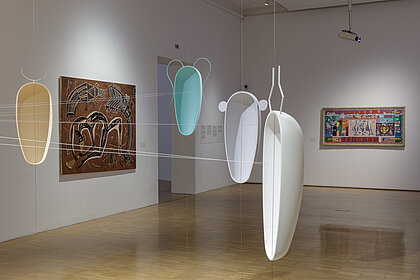This year’s edition of steirischer herbst centers on an exhibition in both wings of the first floor of Neue Galerie Graz. It combines historical works from the gallery’s collection with projects by contemporary artists, thus offering a rereading of the collection through the prism of ignored wars, hidden histories, and repressed conflicts.
Rereadings of Neue Galerie Graz’s collections have already been undertaken in the past, partly in the frame of steirischer herbst, often in search of forms and media prefiguring modernist and contemporary art. This time, the exhibition focuses on works that, in modernism-centered art histories, remained mostly in the shadows: 19th- and 20th-century works that were neglected due to their figurative and narrative qualities. These are linked to works by contemporary artists in different media, most of them newly commissioned. They provide artistic and curatorial comments to ominously peaceful artworks, amplifying the echoes of not-so-distant battles and their far-reaching consequences.
The exhibition is divided into chapters and arranged according to subjective curatorial choices, built on free associations and counterpoints. Its focus is on the political uses of painting, and its common thread is a growing sense of danger, connected to the veiled and open conflicts of Austrian history. These include historical grievances related to the loss of empire, the long history of colonialism, exoticization, and othering in Central and Eastern Europe, as well as the dramas and struggles of class, as solemnly and playfully reflected in works of art.
A detailed exhibition guide is published for the opening and is available free of charge at Neue Galerie Graz and at the Visitor and Press Center of steirischer herbst.
































